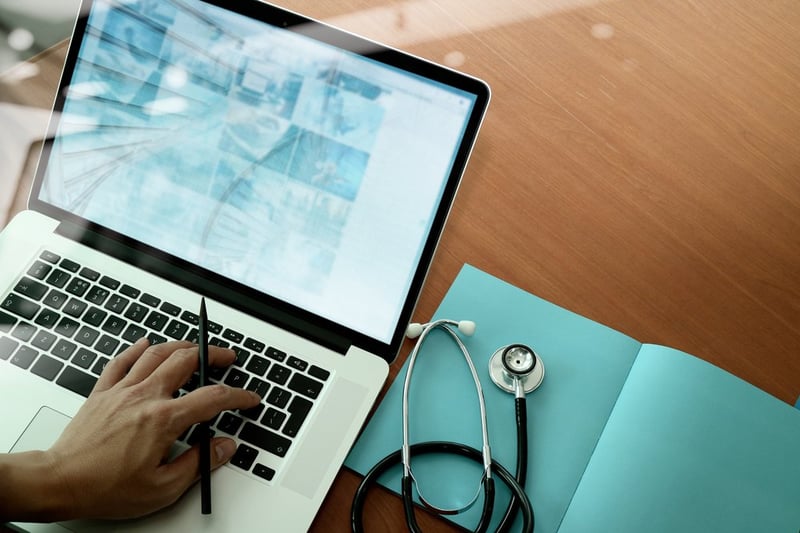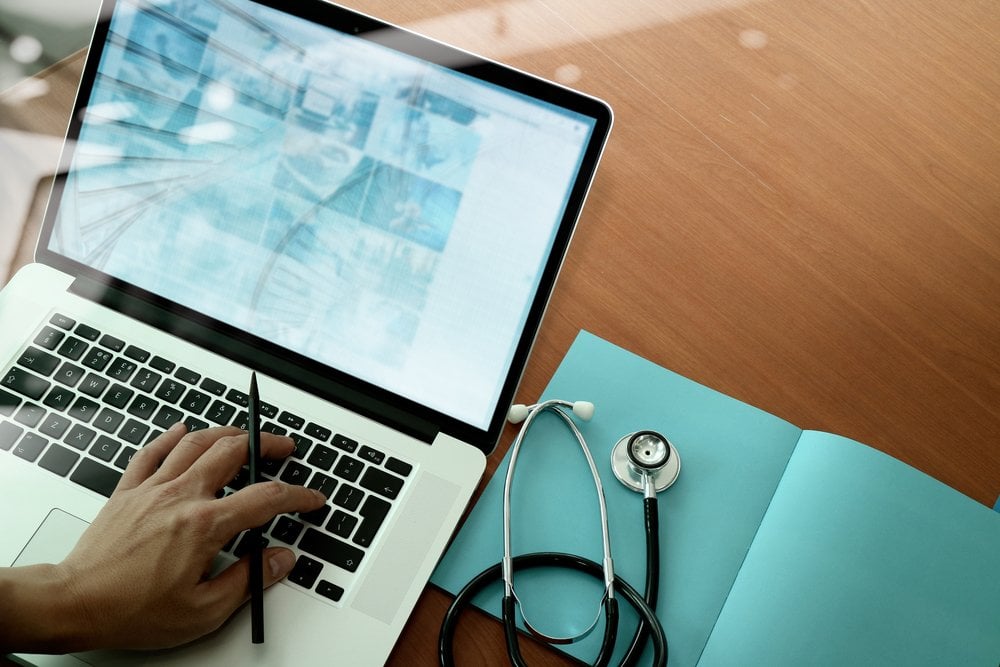
Diverticulitis is typically diagnosed during an acute attack because it is the first time that people experience symptoms. However, many people have Diverticulosis, the dormant form of the condition, and do not even know it! In fact, Diverticulosis is present in 35% of adults below the age of 50 and 58% of adults above the age of 60. Since most people with Diverticulosis are asymptomatic, their condition is regularly undiagnosed until the condition advances to Diverticulitis.
CT Scans are the primary diagnostic tool used for Diverticulitis. A Computed Tomography (CT or CAT) scan allows doctors to see inside your body. In the case of Diverticulitis, it allows doctors to see inside of your colon. The scan uses a combination of X-Rays and a computer to create photos of your organs to identify the pouches, or Diverticulum, that are causing inflammation. Diagnosing Diverticulitis has a few steps:
Physical Examination
Before moving on to scans and blood work, your doctor will first perform a physical examination to check for abdominal tenderness. Typically, the first sign of Diverticulitis is pain in the lower left abdomen. Doctors may also complete a pelvic examination for Women to rule out pelvic disease.
Laboratory Tests
Diagnostic lab tests include blood, urine, pregnancy, liver enzyme, and stool tests. Blood, urine, and stool tests help doctors rule out infection. Additionally, women of childbearing age may complete a pregnancy test to ensure that pregnancy is not the cause of the abdominal pain.
Diverticulitis CT Scan
If physical examination and laboratory tests do not uncover an alternative cause of the pain, the next step is to do an abdominal and pelvic CT scan. These tests are the most definitive ways to diagnose Diverticulitis. A CT scan will identify inflamed or infected diverticula (pouches) in the intestine and confirm the presence of Diverticulitis. Diverticulitis CT scans can also indicate the severity of the condition and help guide the treatment approach. One hour before the CT scan, you will receive either an intravenous (IV) of contrast material or you will drink an oral contrast material. The contrast material helps provide a more detailed view of the affected area.
Although CT scans are considered the gold standard in diagnosing Diverticulitis, there are other diagnostic methods. Doctors may use colonoscopy, ultrasounds, or x-rays on your lower GI tract to diagnose Diverticulitis.
Although these methods can be used to diagnose Diverticulitis, CT scans are the preferred method because they provide more information on the disease severity and are less invasive than other procedures (for example, colonoscopy). However, it is always best to follow your doctor’s treatment plan to ensure that the approach is tailored to you and your condition.
What to Do Next
If you experience a combination of any of the following symptoms, a CT scan may be helpful to rule out Diverticulitis:
- Abdominal pain
- Fever
- Diarrhea
- Constipation
- Nausea or vomiting
- Rectal bleeding
However, Diverticulitis symptoms often mimic the symptoms of other GI conditions, so your doctor may want to conduct multiple tests to ensure they make the proper diagnosis.
Once you have been diagnosed with Diverticulitis, the first step is to reduce the inflammation in your gut to stop the flare. You can reduce inflammation through a temporary elimination diet.
Once your flare has cleared up, you will need to follow a long-term diverticulitis diet to ensure you do not experience a flare in the future. Thankfully, the diverticulitis diet is not very restrictive and includes many high-quality, nutrient-dense foods.
Upon diagnosis, it’s important to communicate with your healthcare team to ensure you have the resources you need to properly manage your condition. Working with a dietitian can help decrease your chances of experiencing a flare in the future through diet therapy. If you feel overwhelmed by your diagnosis or confused as to how to move forward, let our team help you through our personalized approach to diverticulitis management.
For more information on how to manage a diverticulitis flare and improve your diet to deal with your diverticulitis, download our Diverticulitis Nutrition Guide.

Topics

Kaitlyn Willwerth is a Registered Dietitian at OnPoint Nutrition. Kaitlyn's work focuses on providing individualized health and lifestyle coaching and, most importantly, support. She is a Certified LEAP Therapist and has also completed the Monash University 'Low FODMAP Diet for IBS' online training course for health professionals.




